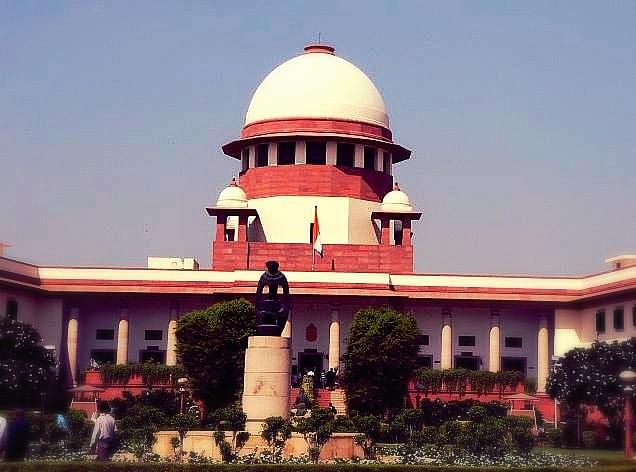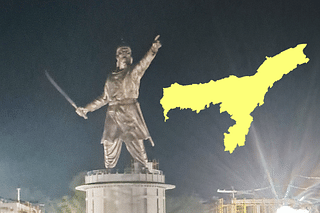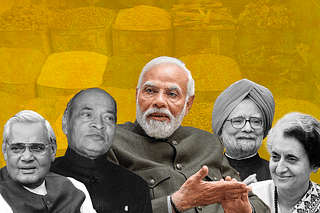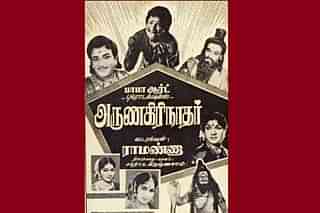Ideas
“Judicial Overreach” Is Perhaps The Softest Possible Description Of The Crisis
Jay Bhattacharjee
Apr 21, 2017, 04:35 PM | Updated 04:35 PM IST
Save & read from anywhere!
Bookmark stories for easy access on any device or the Swarajya app.

It is not pleasant for Indian citizens to watch one of the country’s three constitutional pillars conduct itself in a manner that brings it little credit. This is more so since this particular institution, the Supreme Court, enjoyed a spotless reputation for a few decades after the promulgation of the Constitution.
Then came Mrs Gandhi’s Emergency in 1975, and the precipitous fall from grace of the apex court began when it delivered its infamous verdict on fundamental rights in 1976 (Additional District Magistrate Jabalpur vs S. S. Shukla AIR 1976 S.C 1207), also known as the habeas corpus case.
After the Emergency nightmare ended in 1977, the Supreme Court clawed its way back to grace with a number of landmark judgements, like the one on the basic structure of the Constitution (Minerva Mills Ltd. and Ors. v. Union Of India and Ors., AIR 1980 SC 1789) and innovations like the Public Interest Litigation (PIL).
In the Minerva Mills case, the Supreme Court evolved and fine-tuned the doctrine of the Constitution’s basic structure. It finalised the debate that had been going on in Indian law on this issue and clarified the principles that it had laid down in the Kesavananda Bharati case in 1973.
In the matter of PILs, the Supreme Court started entertaining matters in which the interest of the public at large was involved. In these cases, the apex court can be moved by an individual or a group of persons by depositing a writ petition at the filing counter of the Court or by writing a letter to the Chief Justice of India (CJI). The applications are required to highlight issues and questions of public importance where the court’s jurisdiction can be invoked. Over a few decades, many PIL cases in the Supreme Court became landmarks of Indian legal history.
Our Supreme Court was an international trendsetter in this field and we can be legitimately proud of this. To shed some light on this extraordinary jurisdiction that was conceptualised by our apex court, a writ petition filed at the filing counter is treated like any other writ petition and processed accordingly. In the case of letters addressed to the CJI, they are dealt with according to the court’s PIL guidelines. However, it must be recorded here, most sadly, that the Supreme Court has regressed on this issue in the last few years. But that is not the most important problem we need to discuss at this juncture.
As the 1980s ended, the apex court took some inexplicable decisions that eroded its credibility and stature. The most disturbing step it took was to pass the infamous Veeraswami verdict in 1991 (K Veeraswami vs. Union of India and Others, [1991] 3 SCC 655). Through this completely indefensible and flawed judgement, the Supreme Court unilaterally extended the Constitutional immunity (under Article 124) of the higher judiciary, namely judges of the apex court and the High Courts, to an almost blanket protection from the applicability of all Indian laws.
Over time, the Supreme Court added another element to the deadly concoction. It claimed exclusive power to induct and appoint its own members. The nation’s elected executive was barred from playing any role in the selection and appointment of Supreme Court and High Court judges. When Parliament enacted the National Judicial Appointments Commission (NJAC) Act, 2014, as well as the Constitution 99th Amendment Act, 2014 (amending Articles 124 and 217 of the Constitution), the Supreme Court stepped in promptly to protect its turf.
Sure enough, the apex court in October 2015 ruled against the wishes of the legislature and the executive by striking down the NJAC Act and reverting to the earlier collegium system of appointing higher judges. This is despite the fact that senior lawyers like Fali Nariman who were opposing the Act during the hearing were also categorical in admitting that the collegium system had failed dismally.
This writer assessed the working of the Supreme Court and the higher judiciary in an essay for this magazine in March 2016. Two of the measures that I strongly advocated in the article were that the Veeraswami judgement be abrogated by an act of Parliament and that the collegium system be done away with.
Overruling the Veeraswami judgement is not enough – there has to be a workable and equitable method of sacking judges.
Sadly, all this was nothing but day-dreaming on the part of many concerned observers and citizens like this writer. It is with considerable dismay that we watched the entire system regress sharply. The Supreme Court’s functioning became even more inexplicable. Other perceptive writers also wrote extensively for this magazine about the worrying developments. Two essays merit particular attention: One in November 2016 and one earlier this month.
Unfortunately, the scenario on the ground is causing more concern every passing week. Many commentators are criticising the Supreme Court’s ill-advised moves to venture into terrain that it really should not. “Judicial overreach” is a term that one gets to read very often these days. It certainly has the necessary gravitas and the requisite tact that are obligatory when commenting on the conduct of the highest court in the land.
In all fairness, it must be emphasised that this phenomenon of judicial overreach has become endemic only because the governing apparatus in this country, both at the level of the union and the states, has proved itself to be manifestly incompetent and venal over many years. This compelled the citizens to seek relief from the judiciary. In some cases, the checks-and-balances framework worked. In the long run, however, it motivated the judiciary to inevitably carve out territorial supremacy at the cost of the executive. In sociology, like in physics, a vacuum cannot exist. Therefore, senior politicians like Arun Jaitley, who lament how the courts are meddling in matters that are rightly the exclusive bailiwick of the government, must clean up their act before they complain too much.
However, a specific judgement of the Supreme Court that is most worrying is the one handed down in July 2016 that effectively withdraws the immunity given to the armed forces under the Armed Forces (Special Powers) Act (AFSPA) when they engage in confrontations with armed insurgents and rebels. Although the verdict was delivered in a case related to Manipur, the biggest worry is how it will affect the armed forces in their Kashmir operations.
Last year’s judgement stipulates that every allegation of the use of excessive force that results in the death of an individual caused by the armed forces or the state police in Manipur must be looked into. The registration of an FIR was made mandatory. In practice, the situation has been made bizarre with the state authorities being tasked to investigate acts by the armed forces in a situation where they have been sent only because the local state machinery has failed. The Union of India is now before the Supreme Court in a last-ditch attempt to reverse this extraordinary judgement. A curative petition has been filed after the apex court rejected a review petition filed earlier by the Union Government.
If all this was not bad enough, the Supreme Court has waded into the issue of appropriate methods of combating stone throwers and acid bombers who confront our security personnel almost every day. We have to rub our eyes in disbelief when we read reports about an apex court bench discussing the best tactics that our armed forces and other security personnel should employ to neutralise violent attacks on their lives and limbs.
The questions that are being posed in the public domain by former armed forces personnel on this issue should be reflected on most seriously.
Sample 1: An FIR can now be lodged against an army platoon commander (either a Lieutenant with a number of years of service or a freshly-promoted Captain) whose team has neutralised some terrorists in active combat conditions or a few “militants” in a search operation. In Kashmir, the local anti-nationals will be easily able to mobilise many fictitious “witnesses” to depose against our young officers and/or their enlisted men.
Sample 2: In Kashmir, where terrorists possess some of the most advanced weapons, how can you use legal procedures that are relevant only in peacetime situations?
Sample 3: Now that stone pelters and acid bomb launchers are fully aware of the constraints that our troops are operating under, our soldiers will face more determined opposition.
Sample 4: Among the judges who passed the original order last year or those who are now hearing the curative petition, has anyone done any military service or has any first-hand experience of the combat zones where our armed forces are deployed in protecting our nation?
The answers to these questions are clear and unambiguous. It is now time for the Union Government to take a determined stand and for the highest court to do some much-needed introspection, and to retreat after crossing the Lakshman rekha. The BCCI debacle, the “lal batti” hearings, the Karnan charade and the highway liquor ban are deleterious matters, but India can survive them. Destroying or critically undermining the capabilities of our armed forces to combat terror will be inviting the country to commit harakiri. This is not a hyperbole.
Save & read from anywhere!
Bookmark stories for easy access on any device or the Swarajya app.
Jay Bhattacharjee is a policy and corporate affairs analyst based in Delhi.
Introducing ElectionsHQ + 50 Ground Reports Project
The 2024 elections might seem easy to guess, but there are some important questions that shouldn't be missed.
Do freebies still sway voters? Do people prioritise infrastructure when voting? How will Punjab vote?
The answers to these questions provide great insights into where we, as a country, are headed in the years to come.
Swarajya is starting a project with an aim to do 50 solid ground stories and a smart commentary service on WhatsApp, a one-of-a-kind. We'd love your support during this election season.
Click below to contribute.





